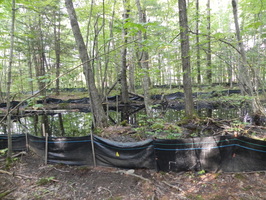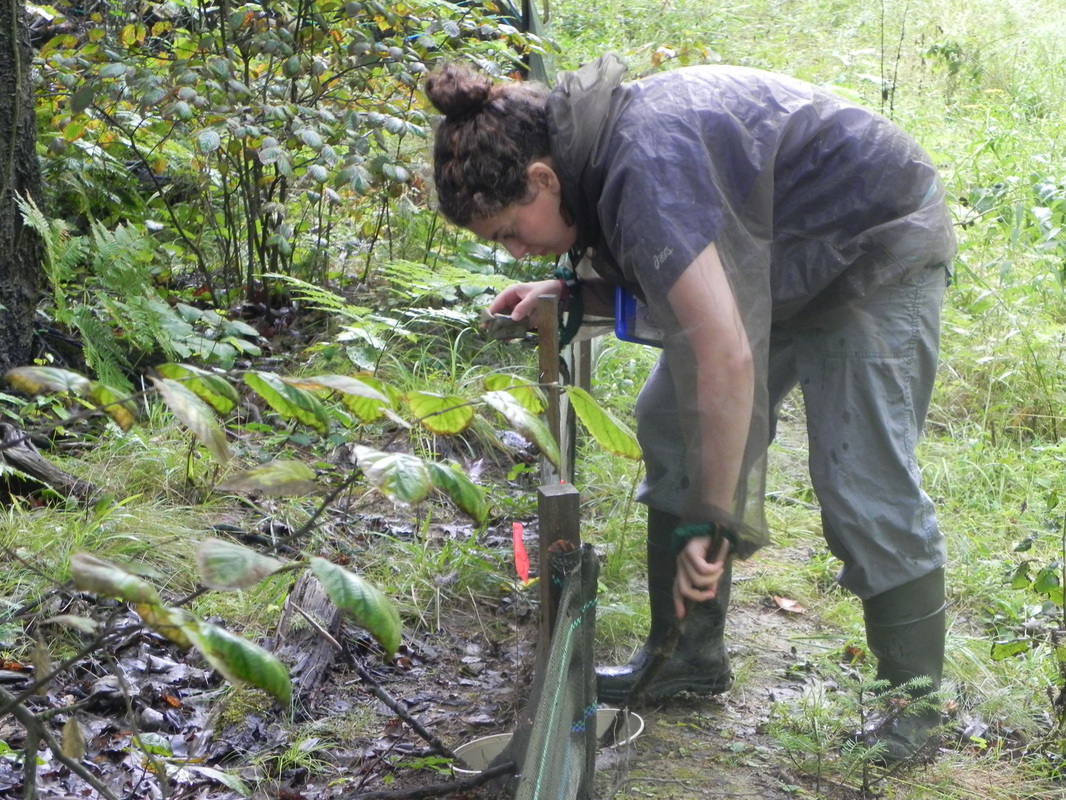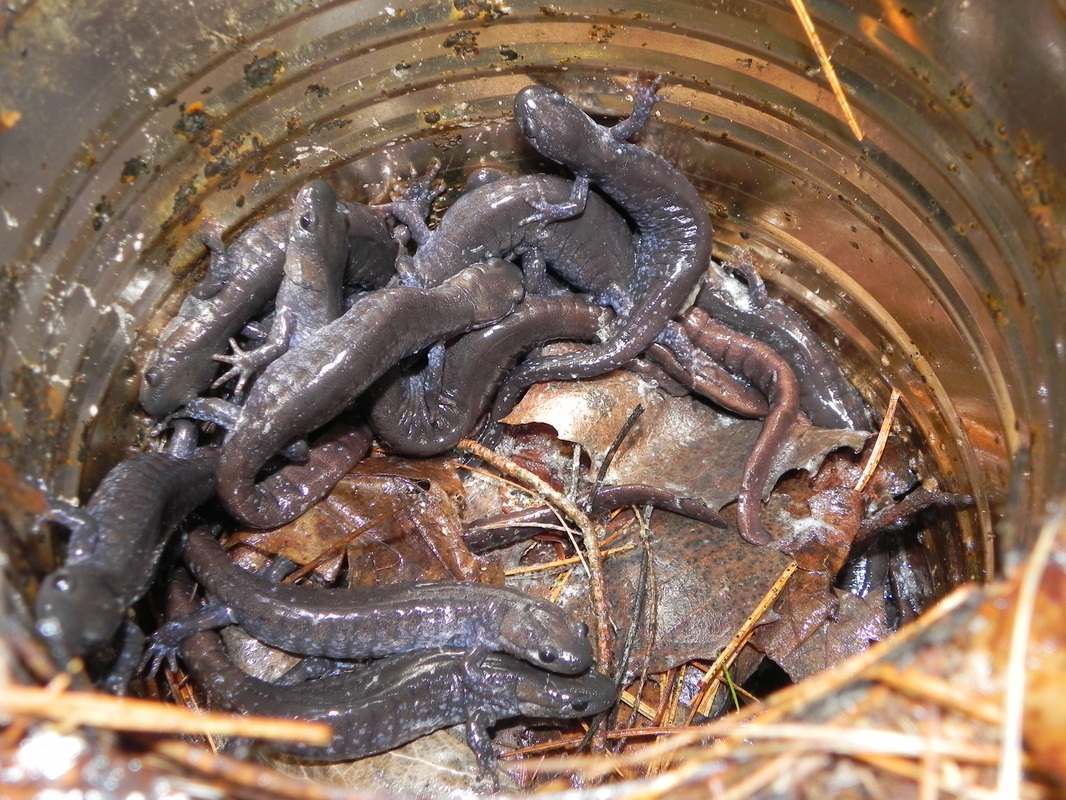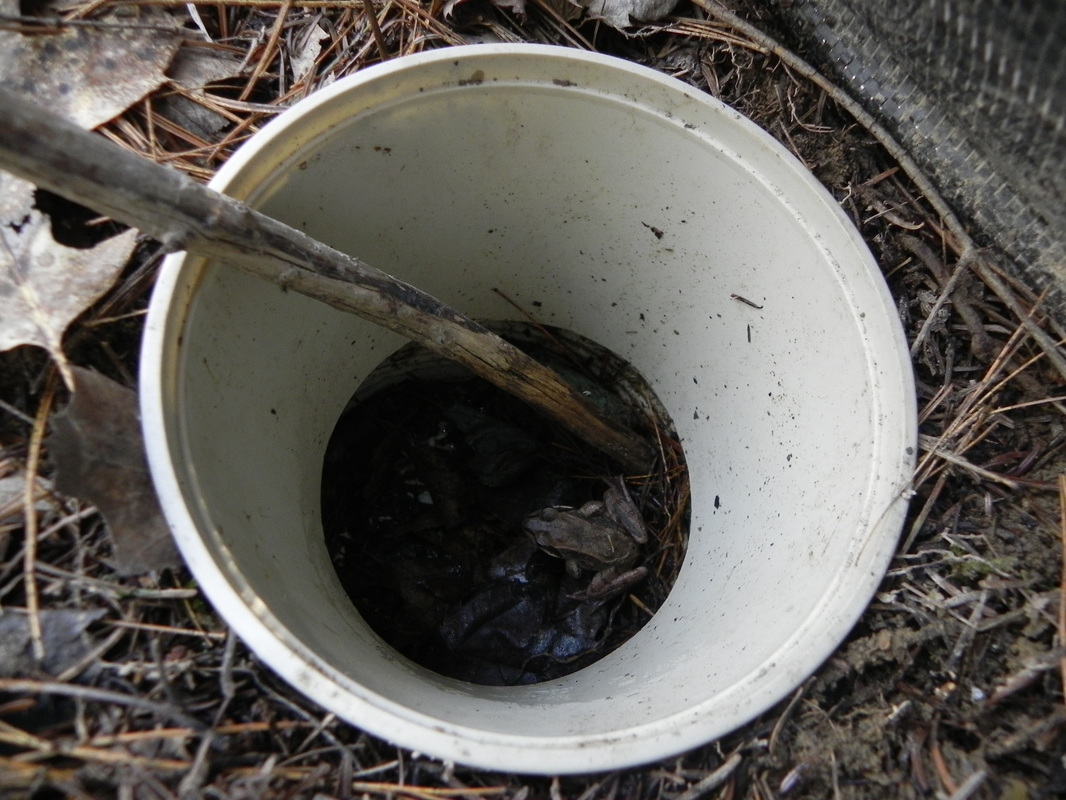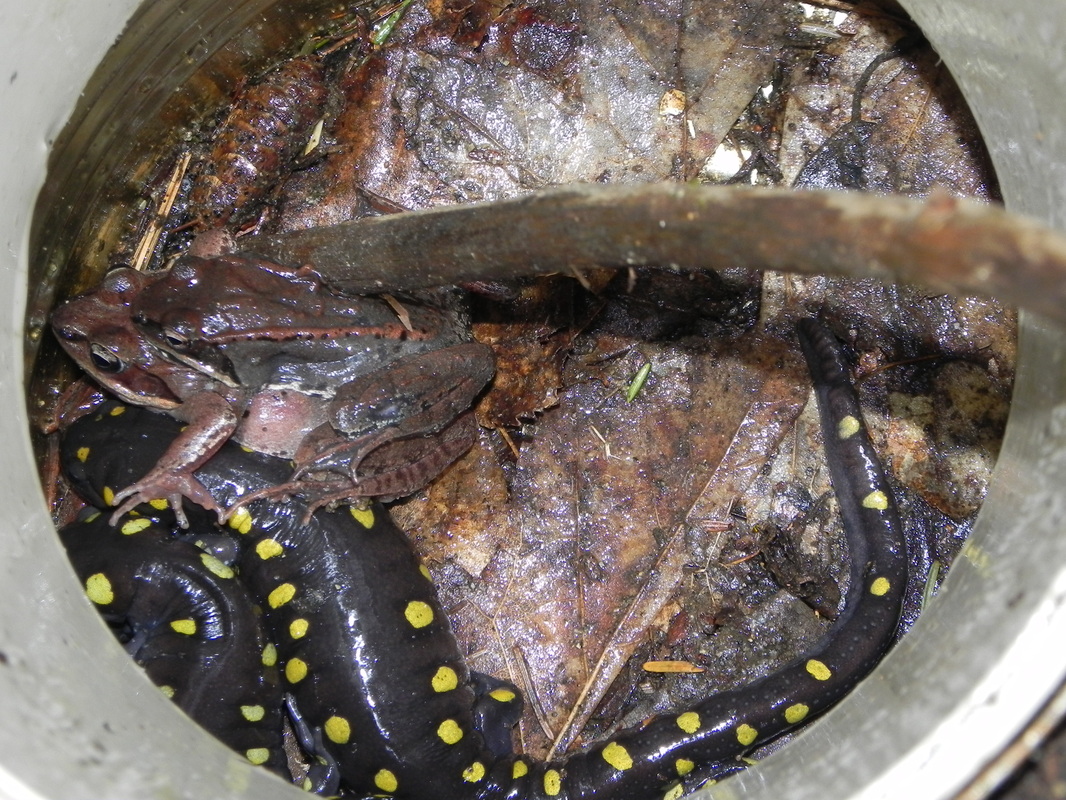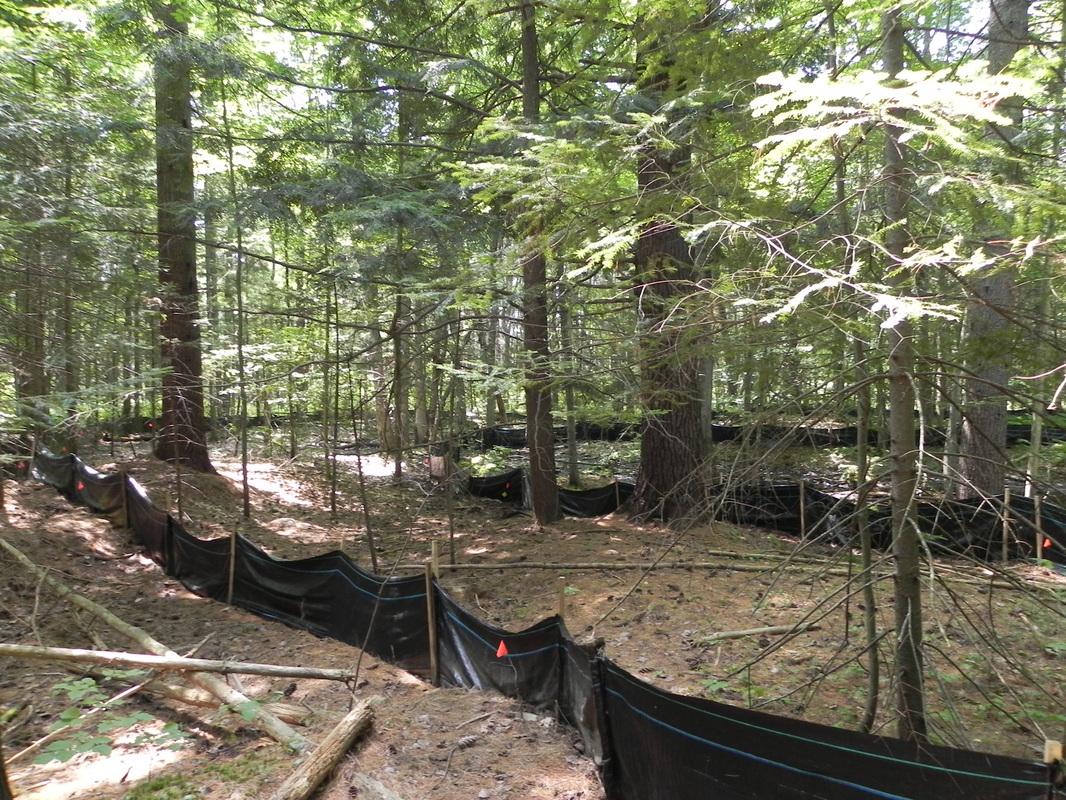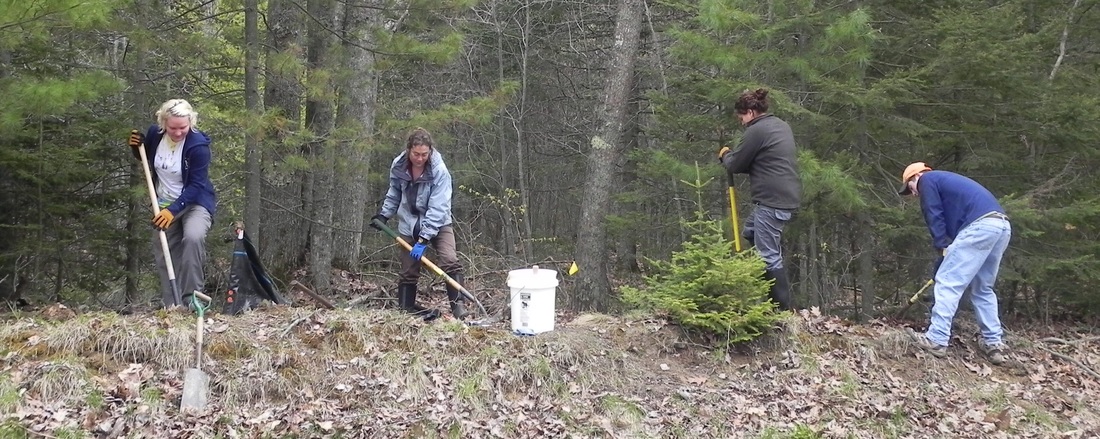
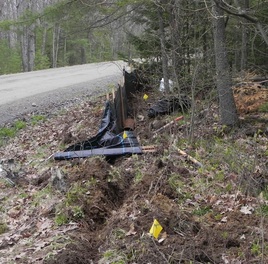 Drift fences are an old and trusted method of capturing amphibians and small reptiles. My fences were constructed by a small army of students and volunteers from the same black silt fence that is used along the edge on construction sites, but sunk 15 cm into the ground so that the salamanders couldn’t crawl underneath them. Every 5 meters along the fence, a pit fall trap was buried even with the surface of the ground. The pitfall trap itself was constructed of an aluminum can (donated by Verve, Moe’s Original BBQ, Miguel’s Mexican Restaurant, and other local restaurants), with a plastic funnel to keep the sticky amphibians from climbing up the walls, a sponge kept them happily moist, and a wooden stick to allow small mammals to climb out to freedom. As the salamanders migrated to and from these vernal pools, they encountered the fence blocking their path and walked along the fence until they fell into the buckets. They waited there until morning when a field technician or I would measure and release t
Drift fences are an old and trusted method of capturing amphibians and small reptiles. My fences were constructed by a small army of students and volunteers from the same black silt fence that is used along the edge on construction sites, but sunk 15 cm into the ground so that the salamanders couldn’t crawl underneath them. Every 5 meters along the fence, a pit fall trap was buried even with the surface of the ground. The pitfall trap itself was constructed of an aluminum can (donated by Verve, Moe’s Original BBQ, Miguel’s Mexican Restaurant, and other local restaurants), with a plastic funnel to keep the sticky amphibians from climbing up the walls, a sponge kept them happily moist, and a wooden stick to allow small mammals to climb out to freedom. As the salamanders migrated to and from these vernal pools, they encountered the fence blocking their path and walked along the fence until they fell into the buckets. They waited there until morning when a field technician or I would measure and release t
hem.
Drift fences are an old and trusted method of capturing amphibians and small reptiles. My fences were constructed by a small army of students and volunteers from the same black silt fence that is used along the edge on construction sites, but sunk 15 cm into the ground so that the salamanders couldn’t crawl underneath them. Every 5 meters along the fence, a pit fall trap was buried even with the surface of the ground. The pitfall trap itself was constructed of an aluminum can (donated by Verve, Moe’s Original BBQ, Miguel’s Mexican Restaurant, and other local restaurants), with a plastic funnel to keep the sticky amphibians from climbing up the walls, a sponge kept them happily moist, and a wooden stick to allow small mammals to climb out to freedom. As the salamanders migrated to and from these vernal pools, they encountered the fence blocking their path and walked along the fence until they fell into the buckets. They waited there until morning when a field technician or I would measure and release them.
The fences provided us with 3 years of data on the emergence of young metamorphed salamanders, and 2 years of data on the migration of breeding salamanders. This information can help us determine not just how many salamanders used each pool, but how successful at reproduction they were, and how the populations differ. For each salamander, we recorded information on its size, direction of travel (away from or towards the pool), and azimuth of travel (which compass direction they were traveling in). We implanted adults with the same microchips used in cats and dogs for identification. We then collected a DNA sample to reveal what type of blue-spotted salamander they were (“true” blue-spot A. laterale or unisexual blue-spot A. laterale x jeffersonianum), and to learn more complex genetic information. Once this data is analyzed, we’ll be able to determine if the salamanders favored entering and exiting the pools from certain locations, and we can then make hypotheses about where they go beyond the pool and what vegetation and landscape features drive this choice. We can also compare the timing, weather relations, and directionality of the “true” blue-spotted salamanders with unisexual blues-potted salamanders and the other vernal pool amphibians to help guide their conservation.
Over the years, the fences have provided educational opportunities and field experience to hundreds of undergraduate students and members of the public. The fenced pools have been field trip destinations for Introduction to Wildlife Resources (WFCB 100), Introduction to Ecology and Environmental Sciences (EES 117), the Student Chapter of the Wildlife Society, Montessori School, Eastern Maine Community College, Orono Land Trust, and various other outreach groups. Twelve undergraduates have participated in week-long internships at the pools during peak migration. Eight undergraduates, four high school students, and two Master of Wildlife Conservation student gained longer field experience over the summers and semesters of operating the fences.
It’s been a long three years of field work at these sites, and now it’s time for me to sit down at the computer and start to unravel the secrets hidden in the data. I need to learn what this experience has said about salamanders, but from the eager community involved, I already have a good idea of what it says about people and their willingness to learn and help.

